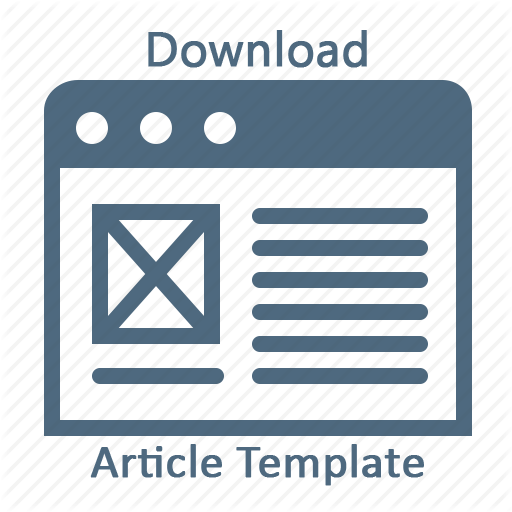Exploring the Impact of Massive Open Online Courses (MOOCs) on Higher Education in Afghanistan: Opportunities, Challenges, and Policy Implications
DOI:
https://doi.org/10.37985/jer.v5i1.993Abstract
Massive Open Online Courses or MOOCs have emerged as a potential solution to enhance access to education globally, including in countries with limited resources such as Afghanistan. This study explores the integration of Massive Open Online Courses in Afghanistan's higher education system through qualitative analysis. Data were gathered from students and faculty across multiple Afghan universities to uncover key themes and implications associated with MOOC integration. The analysis revealed a diverse demographic composition among respondents, with a concentration of younger participants. A total of One hundred twenty participants, including eighty students and forty faculty members, contributed to the study. Perceptions regarding MOOC interventions were predominantly positive, highlighting their potential to enhance educational experiences. However, challenges such as task complexity and the digital divide underscored the need for tailored strategies to address contextual constraints. Despite obstacles, interventions were perceived to positively impact motivation levels and educational outcomes. In conclusion, the study advocates for a nuanced approach to MOOC implementation, considering regional disparities and population dynamics. By contextualizing MOOC integration within Afghanistan's socio-economic and technological landscape, stakeholders can develop targeted interventions to maximize benefits and mitigate challenges. These insights contribute to the broader discourse on leveraging digital technologies for educational advancement, offering practical implications for enhancing access and quality in higher education settings.
Downloads
References
Akrami, K., Akrami, M., Akrami, F., & Hakimi, M. (2024). Investigating the Integration of Big Data Technologies in Higher Education Settings. Indonesian Journal of Multidisciplinary on Social and Technology, 2(2), 1-12. https://doi.org/10.31004/ijmst.v2i2.296
Akrami, M., Arabzada, R., Ahrari, M., Akrami, K., Akrami, F., Hakimi, M., & Fazil, A. W. (2023). The Impact of Mobile Applications on Quran Education: A Survey of Student Performance and Satisfaction. Studies in Media, Journalism and Communications, 1(1), 22-32. https://doi.org/10.32996/smic.2023.1.1.3x
Amiri, F., Quraishi, T., Hakimi, M., & Fazil, A. W. (2024). Assessing The Efficiency of Web-Hosted E-Learning Platforms in Afghanistan Academic Settings: An Exploration at Herat University. EDUTREND: Journal of Emerging Issues and Trends in Education, 1(1), 39-56. https://doi.org/10.59110/edutrend.309
Andone, D., & Mihaescu, V. (2018, September). Blending MOOCs into higher education courses-a case study. In 2018 Learning with MOOCs (LWMOOCs) (pp. 134-136). IEEE.
Atiaja, L. A., & Proenza, R. (2016). The MOOCs: Origin, Characterization, Principal Problems and Challenges in Higher Education. J. e-Learn. Knowl. Soc., 12(1), 1-12. https://www.learntechlib.org/p/171428/
Baturay, M. H. (2015). An overview of the world of MOOCs. Procedia-Social and Behavioral Sciences, 174, 427-433. https://doi.org/10.1016/j.sbspro.2015.01.685
Billington, P. J., & Fronmueller, M. P. (2013). MOOCs and the future of higher education. Journal of Higher Education Theory and Practice, 13(3/4), 36-43. Retrieved from http://www.na-businesspress.com/JHETP/billington_abstract.html
Burd, E. L., Smith, S. P., & Reisman, S. (2015). Exploring business models for MOOCs in higher education. Innovative Higher Education, 40, 37-49. https://link.springer.com/article/10.1007/s10755-014-9297
Ebner, M., Schön, S., & Braun, C. (2020). More than a MOOC—seven learning and teaching scenarios to use MOOCs in higher education and beyond. In Emerging Technologies and Pedagogies in the Curriculum (pp. 75-87). Singapore: Springer Singapore.
Hakimi, M., Katebzadah, S., & Fazil, A. W. (2024). Comprehensive Insights into E-Learning in Contemporary Education: Analyzing Trends, Challenges, and Best Practices. Journal of Education and Teaching Learning (JETL), 6(1), 86-105. https://doi.org/10.51178/jetl.v6i1.1720
Khalid, A. H. (2020). An exploratory qualitative study of the potential for enhanced e-learning in public higher education in Afghanistan (Doctoral dissertation, Indiana University of Pennsylvania).
Kim, S. W. (2016). MOOCs in higher education. Virtual Learning, 1(1), 1-17. https://www.intechopen.com/chapters/53197
Li, Y. (2019, May). MOOCs in higher education: Opportunities and challenges. In 2019 5th International Conference on Humanities and Social Science Research (ICHSSR 2019) (pp. 48-55). Atlantis Press.
Quraishi, T., Bayani, B. M., Yashar, S., Daudzai, M., Salamzada, R., Amini, M., & Hakimi, M. (2024). Integration of Mobile Learning Technologies in Afghanistan Universities: Opportunities and Challenges. Education Specialist, 2(1), 1-14. https://doi.org/10.59535/es.v2i1.227
Quraishi, T., Ulusi, H., Muhid, A., Hakimi, M., & Olusi, M. R. (2024). Empowering students through digital literacy: A case study of successful integration in a higher education curriculum. Journal of Digital Learning and Distance Education, 2(8), 667-681. https://doi.org/10.56778/jdlde.v2i8.208
Sandeen, C. (2013). Integrating MOOCs into traditional higher education: The emerging "MOOC 3.0" era. Change: The Magazine of Higher Learning, 45(6), 34-39.
Schuwer, R., Gil-Jaurena, I., Aydin, C. H., Costello, E., Dalsgaard, C., Brown, M., Jansen, D., Teixeira, A., & Souto-Otero, M. (2015). Opportunities and threats of the MOOC movement for higher education: The European perspective. International Review of Research in Open and Distributed Learning, 16(6), 20-38. https://doi.org/10.19173/irrodl.v16i6.2153
Yuan, L., & Powell, S. (2013). MOOCs and open education: Implications for Higher Education: A white paper. JISC CETIS, 1-21.
Zakharova, U., & Tanasenko, K. (2019). MOOCs in higher education: Advantages and pitfalls for instructors. Вопросы образования, (3 (eng))), 176-202. https://cyberleninka.ru/article/n/moocs-in-higher-education-advantages-and-pitfalls-for-instructors
Brown, E. L., Jones, S. P., & Reisman, S. (2020). Exploring business models for MOOCs in higher education. Innovative Higher Education, 40(1), 37-49. https://link.springer.com/article/10.1007/s10755-014-9297-0
Pregowska, A., Masztalerz, K., Garlińska, M., & Osial, M. (2021). A worldwide journey through distance education—from the post office to virtual, augmented and mixed realities, and education during the COVID-19 pandemic. Education Sciences, 11(3), 118. https://doi.org/10.3390/educsci11030118
Zhang, K., Bonk, C. J., Reeves, T. C., & Reynolds, T. H. (2019). MOOCs and Open Education in the Global South: successes and challenges. In K. Zhang, C. J. Bonk, T. C. Reeves, & T. H. Reynolds (Eds.), MOOCs and Open Education in the Global South (pp. 1-14). Routledge.
Downloads
Published
How to Cite
Issue
Section
License
Copyright (c) 2024 Irfanullah Azimi, Mosa Ebrahemi, Mohammad Jawad Merzaee

This work is licensed under a Creative Commons Attribution-ShareAlike 4.0 International License.
Authors who publish with this journal agree to the following terms:
- Authors retain copyright and grant the journal right of first publication with the work simultaneously licensed under a Creative Commons Attribution-ShareAlike 4.0 International License that allows others to share the work with an acknowledgement of the works authorship and initial publication in this journal.Â
- Authors are able to enter into separate, additional contractual arrangements for the non-exclusive distribution of the journals published version of the work (e.g., post it to an institutional repository or publish it in a book), with an acknowledgement of its initial publication in this journal.
- Authors are permitted and encouraged to post their work online (e.g., in institutional repositories or on their website) prior to and during the submission process, as it can lead to productive exchanges, as well as earlier and greater citation of published work (See The Effect of Open Access).









